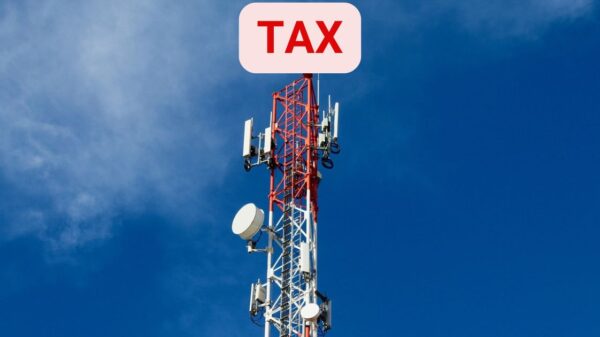This week, Florida TaxWatch (FTW) released a new report entitled “At the Cliff’s Edge: How Reducing Benefits Cliffs Can Stimulate Workforce Participation and Economic Growth,” which analyzes public safety net programs and benefits cliffs, a scenario in which a small increase in wages results in the partial or total loss of public benefits.
The report presents implications for hiring and retaining workers in Florida’s tight labor market, as well as the overall impact on the economy. In the report, FTW also offers recommendations to mitigate these problems and thereby expand economic self-sufficiency, advancement, and mobility over time.
Florida TaxWatch President and CEO Dominic Calabro weighed in on the report on Tuesday.
“Florida is leading the nation in economic recovery from the COVID-19 pandemic, especially in job creation, and employers are doing what they can to find and retain good employees. In this labor market, it’s shocking that there are ready and willing workers that have to turn down work, more hours, or raises because it doesn’t make sense to make more money. Benefits cliffs are standing in the way of some very good job opportunities,” Calabro said.
“This is one of those ironic situations where a positive step in someone’s employment situation can actually have a negative impact overall. By design, many public assistance programs important to helping employees stabilize their income and stay employed – like childcare assistance and housing support – force workers out for even small increases in pay. The result is a natural disincentive to accept higher wages or forego work altogether, the exact opposite of what we want for our workers and families,” he added.
“We need Floridians to benefit from employment opportunities and upward mobility, but benefits cliffs work against us. Encouraging individuals to turn down good jobs in order for them to protect important family support tools, such as healthcare, childcare, and housing assistance, doesn’t make sense in today’s labor market. Our report provides suggestions for important changes that can smooth out the cliffs, protect employees and employers, decrease long-term use of public assistance, and most importantly, reduce taxpayer costs,” Calabro concluded.
Since peaking in March 2007, Florida’s labor force participation rate (LFPR) has gradually declined. The COVID-19 pandemic exacerbated that trend, with the LFPR dropping to a low of 53.8 percent in April 2020. By the start of 2022, the LFPR recovered to 58.6 percent, but still remained below pre-pandemic levels.
Florida’s labor force has rebounded, with jobs lost between February and April 2020 reclaimed and the unemployment rate steadily decreasing – reaching 3.2 percent in March 2022. However, enrollment in public assistance programs, such as Medicaid, still spiked as many individuals and families faced sudden financial shocks and, more recently, historically high inflation rates.
Following the onset of the pandemic, public assistance programs like the Supplemental Nutrition Assistance Program (SNAP), Temporary Assistance to Needy Families (TANF), and Medicaid all witnessed increased enrollment across the nation and in Florida, peaking in the summer of 2020. Since then, the number of Floridians receiving SNAP and TANF has fallen – though SNAP enrollment still remains above pre-pandemic levels – and Medicaid enrollment has continued to rise, reaching 4.3 million at the start of 2022. For comparison, it was 3.2 million in January 2020 and 3.8 million in December 2020.
Benefits cliffs work at odds with the intended design of public assistance programs, disincentivizing individuals to work and encouraging them to rely on public benefits instead. The taxpayer contributions that fund these programs are therefore perpetuated with increased enrollment
FTW makes the following recommendations for policymakers and other key stakeholders in this report:
Modify Florida’s Child Care and Development Fund (CCDF) eligibility design to provide for an alternative co-pay schedule that takes into account each county’s cost of living.
Increase the income eligibility threshold at the margins of the Federal Poverty Level (FPL) and gradually raise the premium amounts families pay until an established level under Florida Children’s Health Insurance Program (CHIP) – also known as KidCare – for families facing the benefits cliff.
Support affordable housing efforts around the state by ensuring adequate levels for the Sadowski affordable housing trust fund and not redirecting targeted funds to other state issues.
Encourage participation in the federal Earned Income Tax Credit (EITC) program by supporting local Volunteer Income Tax Assistance (VITA) sites and directing caseworkers to automatically inform eligible families of this service when they apply to state-level public assistance programs like TANF, SNAP, or Medicaid/CHIP.
Identify ways to use Workforce Innovation and Opportunity Act (WIOA) resources and partner programs to alleviate benefits cliffs and incorporate existing benefits cliffs tools
Incorporate benefits cliffs visualization tools like the Career Ladder Identifier and Financial Forecaster (CLIFF) and Policy Rules Database (PRD) within workforce development organizations, local businesses, nonprofits, and other agencies.
Perform a state-level comprehensive assessment to examine the aggregate economic and fiscal impacts of benefits cliffs on Florida’s economy. The assessment should identify the most common combination of public assistance programs, which programs create the biggest cliff effects, and how such difficulties reduce labor force participation and increase state costs.





















